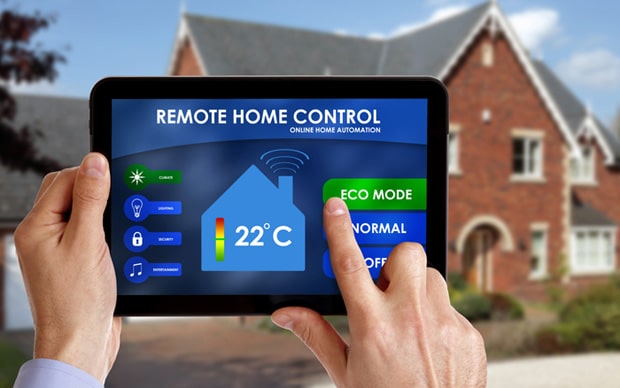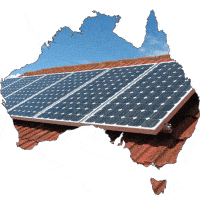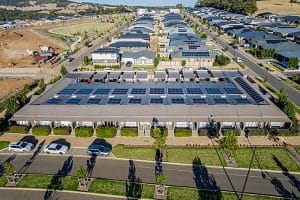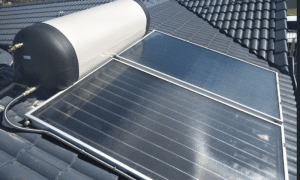How can households become independent in their solar electricity production with the right system and when will it happen across Australia?
There’s no question that battery storage from solar power is already becoming commonplace. Aside from the commercial sector, where companies in Australia, Denmark, and the US have already created buildings that are energy self-sufficient, there are already some households up-and-running with energy self-sufficient. Predictions are that by 2020 we’ll see wide-ranging changes in off-the-grid usage.
A recent survey carried out by the Climate Council stated that almost three-quarters of those questioned believed batteries connected with solar systems would become the norm in the next decade. For those already using solar systems, 68 per cent were thinking about adding a household storage battery. The primary motivation for buying solar home battery storage was to economize bills, most of the correspondents argued when interviewed by ABC.

“It shows that Australians do understand that renewables — particularly solar and increasingly battery storage — provide a solution to high power prices,” Climate Council director Andrew Stock said.
“In some states that have high power prices, analysis shows it’s economical now to install batteries. Sunny states like South Australia and Queensland have relatively high power prices, so it’s quite economical to install battery systems.”
The future has already happened
A house that produces energy but doesn’t consume any itself is no longer a sci-fi movie dream. According to a recent article in the Guardian, ‘The Way We Live Now’, engineers and architects have created the energy positive house. Carbon Positive Houses or CPHs produce more energy on site than the building requires.
The prototype, The Archiblox Positive House, introduced in Melbourne’s City Square in 2015, was hailed as elegant and modernist.
“The trick is to make the sustainable and performance products visually pleasing while also practical,” said David Martin, construction director of the ArchiBlox Positive House – the world’s first pre-fab energy positive house.
Surplus power into battery storage
Rooftop solar panels and cooling tubes generate energy and regulate the temperature, while double-glazed windows and thick walls conserve energy. The end result: surplus power. At the University of California, Berkeley, students worked with Honda to develop yet another concept, the Honda Smart Home, which looks more like a typical terrace house, but which generates surplus energy the same way as the ArchiBlox and the Visioneum, an energy-positive house in Germany.
All fine for global companies and sponsored projects in the commercial sector. But what is the reality for the ordinary Australian consumer? Australia already generates enough renewable energy to power 70 per cent of homes, so the emergence of battery storage options and greater use of pump storage will become more prevalent, according to the Future of Australian Energy Report.
In the next decade, as technology development improves, the transition from reliance on centralised electricity generation to distributed energy generation and storage will become more commonplace. There is a strong market emerging for home storage in Australia, which also holds positive benefits for the grid as a whole. By connecting millions of customers owned generators and storage systems to another, they can act as networks which help to match supply and demand.
So what about the households that are already energy sufficient? How are they faring? Do they regret their decisions? For some, it is not a choice.
How would you like to have no bills?
Adrian Shand and his partner’s remote property is near Ballarat. Being entirely disconnected from the grid, Adrian has to generate all the electricity the home uses.
The installation at the Shand residence cost around $56,000, including solar panels, cables and inverters. A lot of people would find this too expensive, but the cost of getting connected to the grid, in this case, would have been a prohibitive $200,000. Adrian chose a brand new installation, upgrading almost everything including the solar panels and the cabling.
While Adrian has no conventional power bills to compare costs to, their reliance on the petrol generator has dramatically decreased. While the house is designed to be efficient in its energy use, only using around 5kWh/day, the difference in generation with the new setup is still dramatic.
Living off-grid is certainly working for Adrian. “I didn’t realise this would be such a big deal for me, but I go to the letterbox and I don’t receive any bills,” he said. “There’s not this sort of constant demand on your finances.”
When is this going to happen?
The good news is that the battery revolution has already started. Battery consumption has been increasing since the beginning of 2017, according to AEMO, and it’s set to rocket in the mid-2020s when the technology will be more affordable to the average household.
There’s no doubt that battery storage is an emerging market ready to make a significant change for good in the electricity generation market, but when can the consumer be 100 per cent efficient?
According to a report – Climate Change Strategy for South Australia – it is going to take 15-20 years. It’s difficult to put an exact figure on it, but for some households, the dream of being energy sufficient is fast becoming a reality.







































